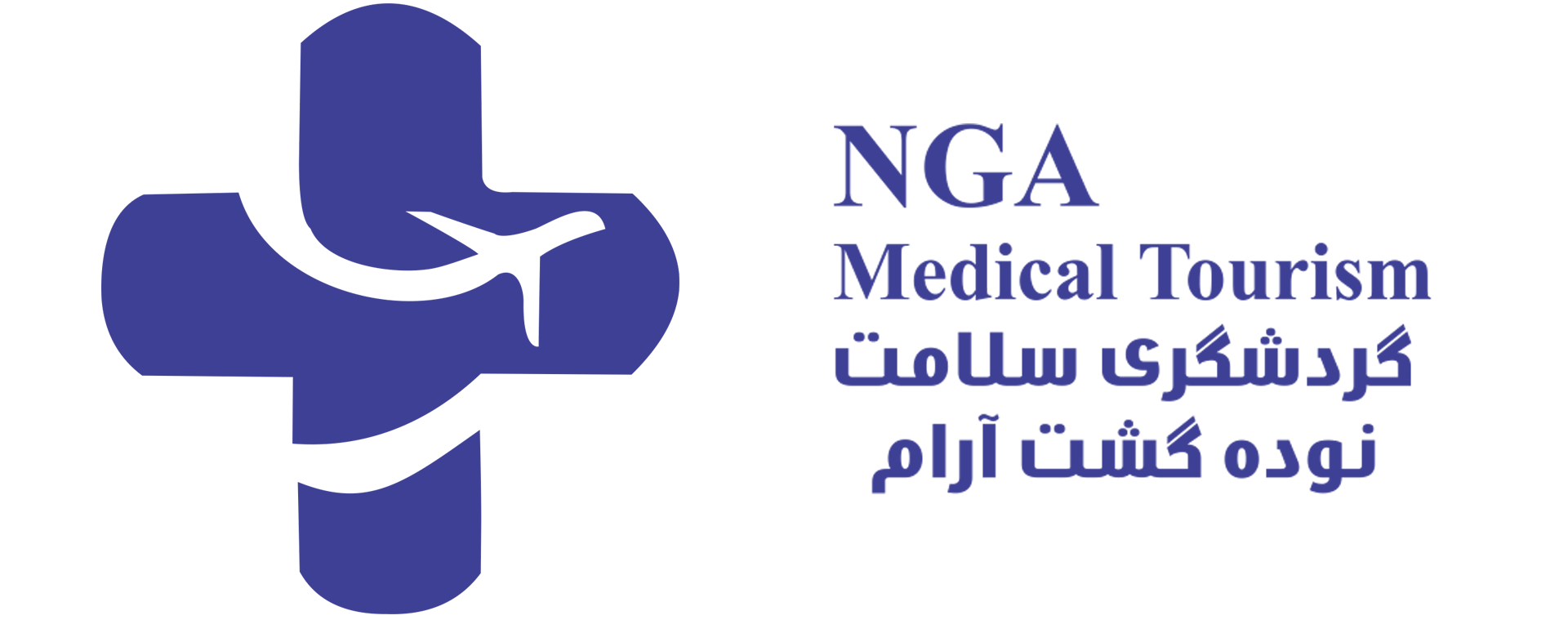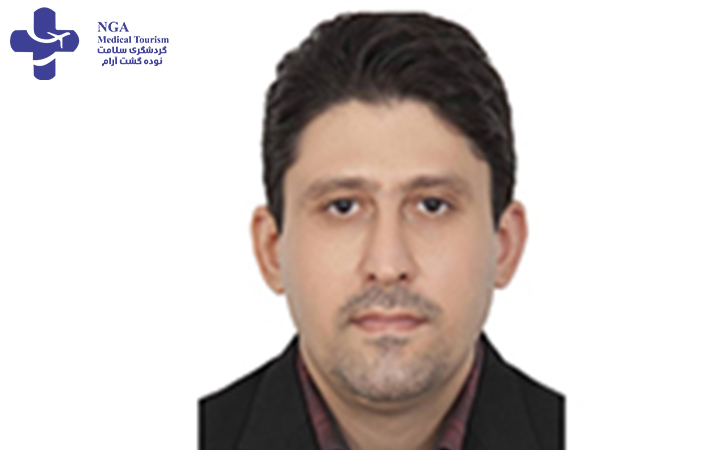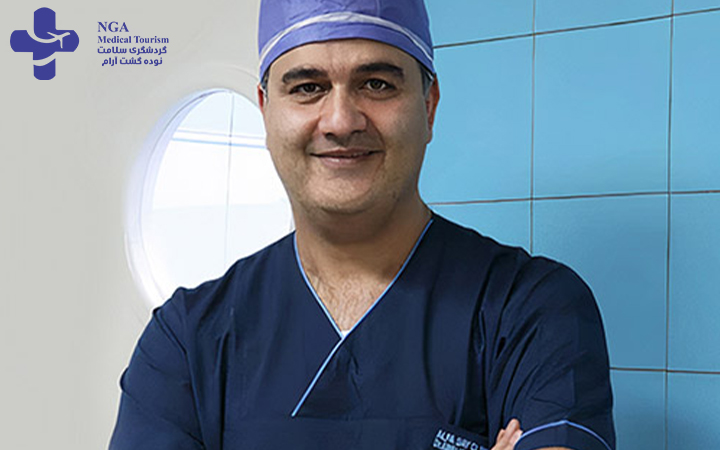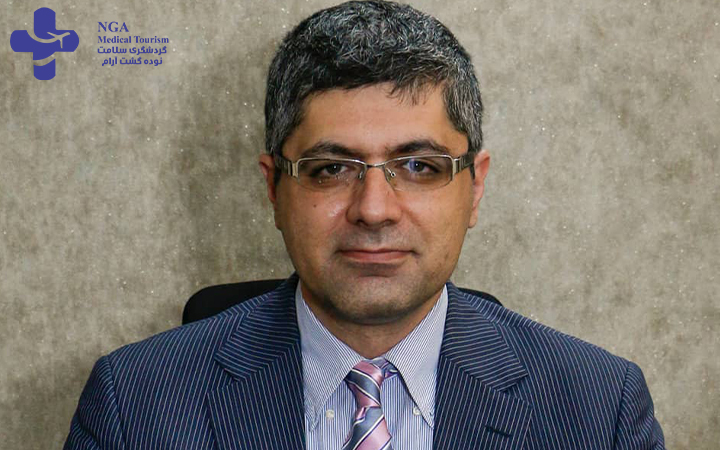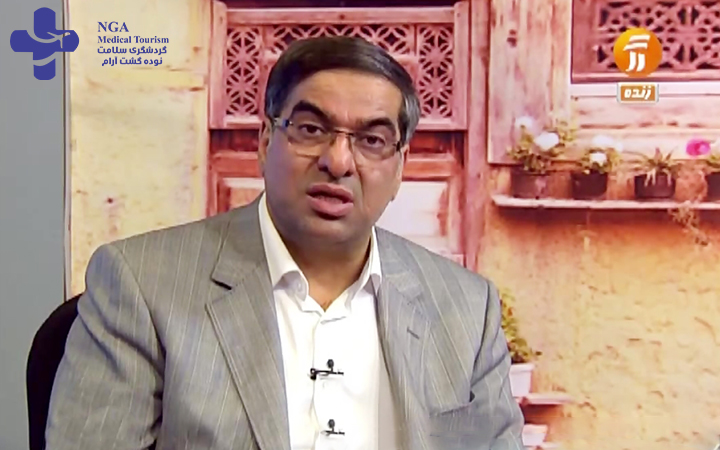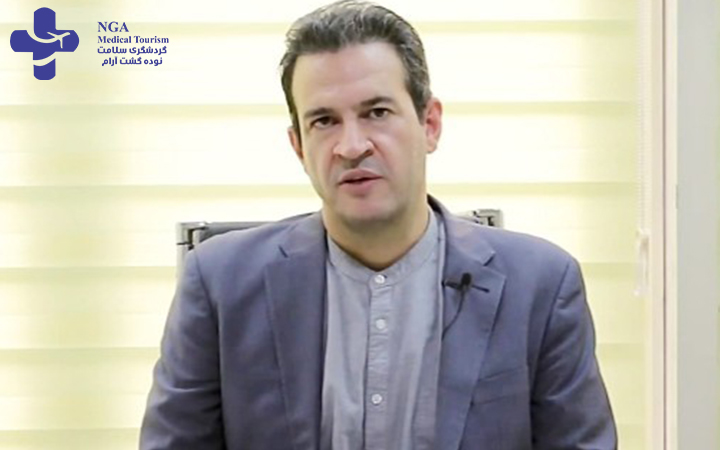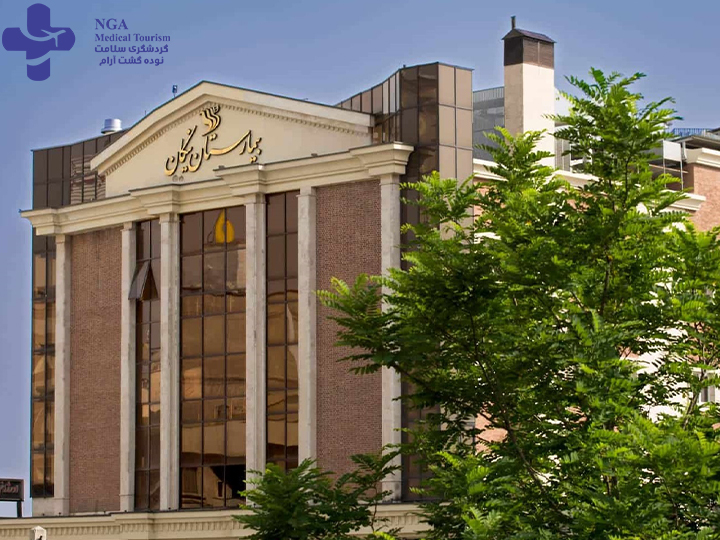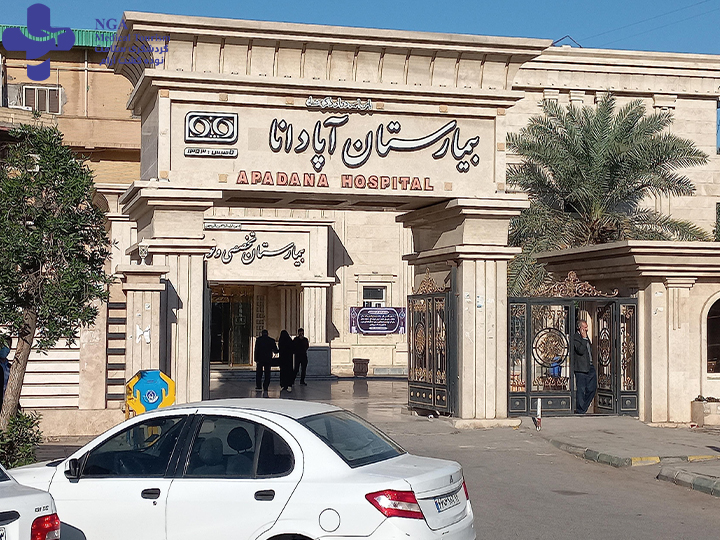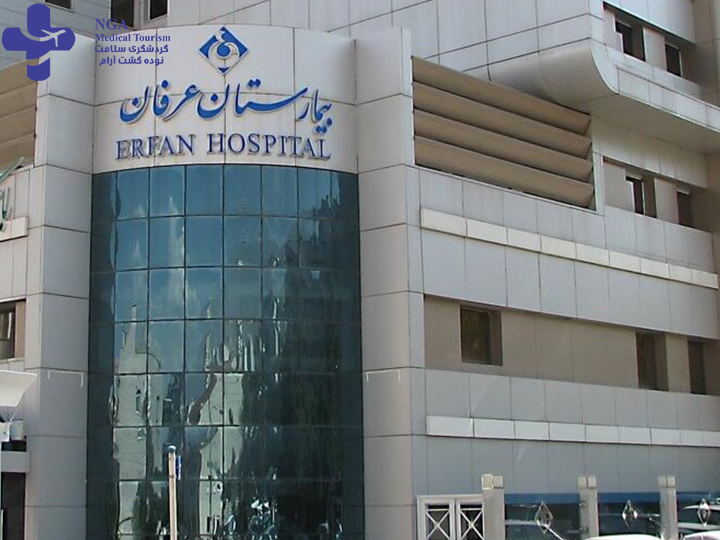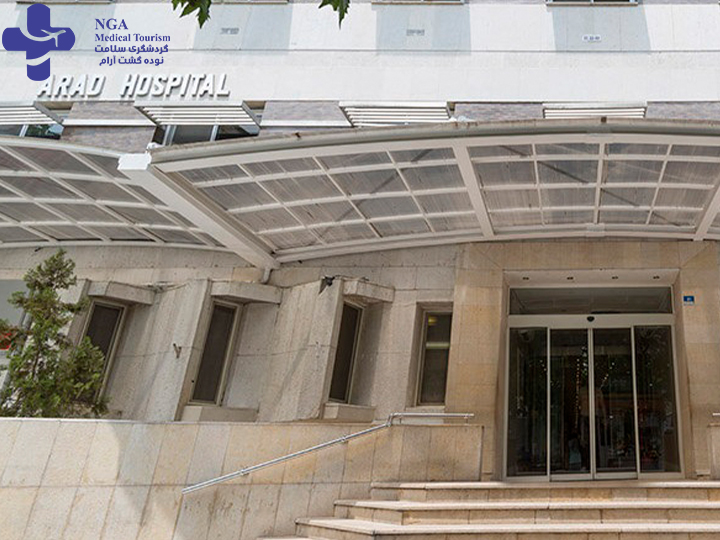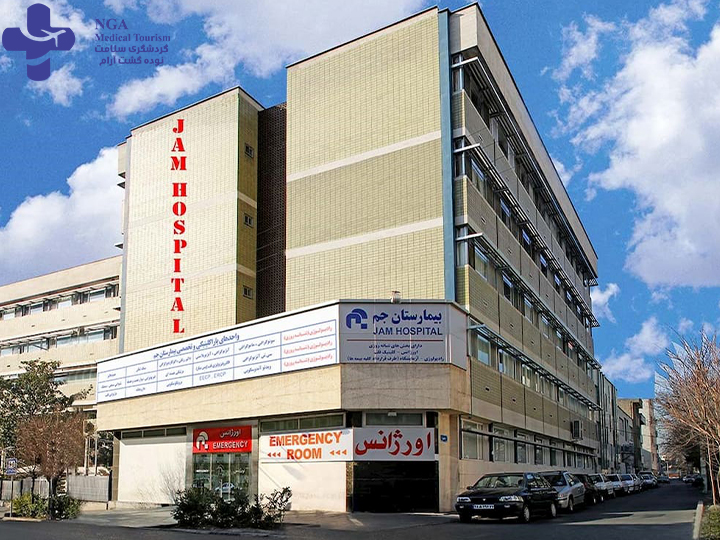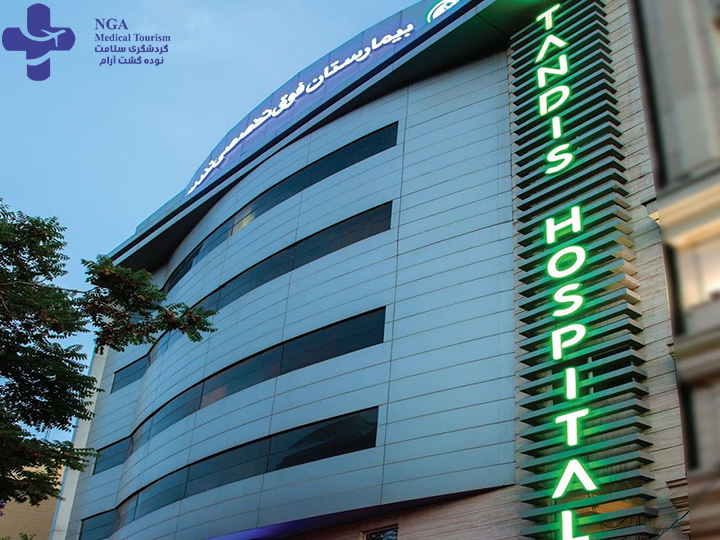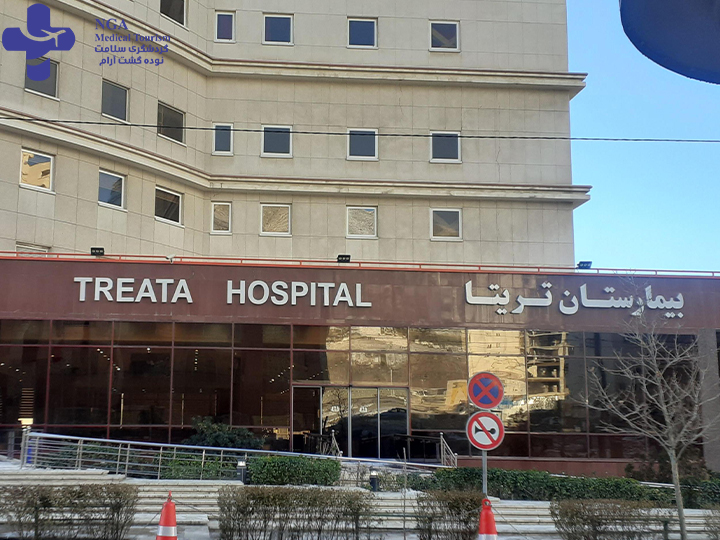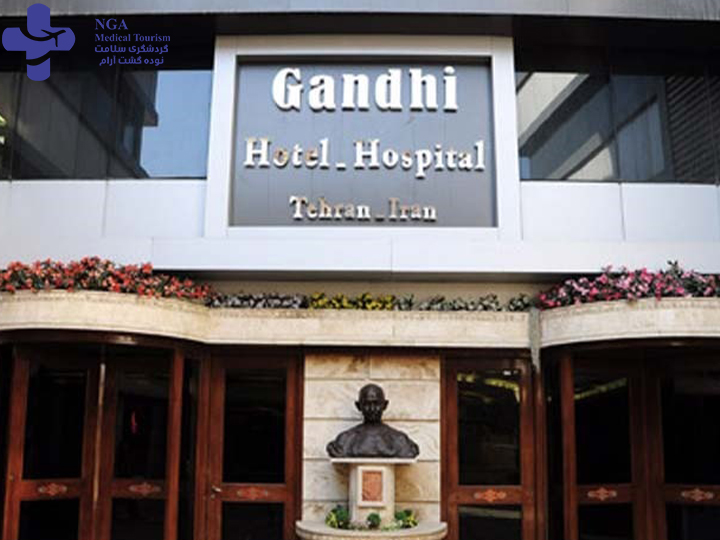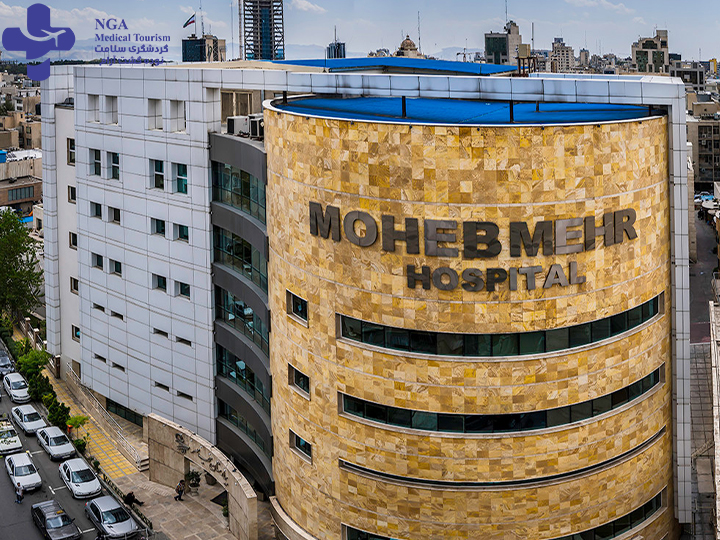Liposuction in iran|How much is liposuction in iran 2023
Best Hospital
We Introduce Best Hospital for General Heart Surgery
Best Doctors
We Introduce Best Doctors for General Heart Surgery
Best Price
We Try to introduce best Services with Regular Price
What is Liposuction?
Liposuction is a surgical procedure that involves removing excess fat from the body through a suction technique. It’s typically used to target areas of the body that are resistant to diet and exercise, such as the abdomen, hips, thighs, buttocks, arms, and neck. During the procedure, a small incision is made in the skin, and a thin tube called a cannula is inserted into the fatty tissue. The cannula is then used to break up and suction out the excess fat. Liposuction can be performed under local or general anesthesia, depending on the extent of the procedure and the patient’s comfort level. It’s important to note that liposuction is not a weight-loss solution, but rather a body-contouring procedure that can help improve the appearance of specific areas of the body.
Why liposuction in Iran and with ipd tourism?
Liposuction is a popular cosmetic surgery procedure in Iran, with many skilled and experienced plastic surgeons offering this service. Iran is known for its high-quality medical care and modern facilities, and many people from around the world travel to Iran to receive medical treatment, including cosmetic surgeries like liposuction.
IPD tourism, or medical tourism facilitated by a medical travel agency, can be a good option for people who are considering liposuction in Iran. Medical travel agencies like IPD can help arrange all aspects of your trip, including travel, accommodations, and medical appointments, making the process more streamlined and convenient. They can also help connect you with reputable and experienced plastic surgeons in Iran, which can be especially helpful for people who are traveling from abroad and may not be familiar with the local medical system.
How Is Liposuction Performed in Iran?
Liposuction in Iran is performed using similar techniques to those used in other countries. The procedure typically begins with the administration of anesthesia, which can be local or general depending on the extent of the procedure and the patient’s preference. Once the patient is anesthetized, the surgeon will make small incisions in the skin near the area to be treated.
Next, a thin tube called a cannula is inserted through the incision and into the fatty tissue. The cannula is attached to a vacuum device that suctions out the excess fat. The surgeon will carefully move the cannula back and forth to break up the fat cells and create a smooth contour in the treated area.
After the desired amount of fat has been removed, the incisions are closed and the patient is moved to a recovery area. Patients may need to wear a compression garment to help reduce swelling and improve the results of the procedure.
In Iran, liposuction is typically performed in modern and well-equipped facilities by skilled and experienced plastic surgeons.


Cost of Liposuction in Iran
The cost of liposuction in Iran can vary depending on several factors, including the extent of the procedure, the surgeon’s experience and reputation, and the location and facilities where the surgery is performed. However, in general, liposuction in Iran is more affordable compared to many other countries.
On average, the cost of liposuction in Iran ranges from $1,500 to $3,500 USD. This cost typically includes the surgeon’s fee, anesthesia, and facility fees, but may not include additional costs such as pre-operative tests, medications, or follow-up appointments.
Things to know about liposuction in Iran
If you are considering liposuction in Iran, here are some important things to know:
- Research the surgeon and facility
- Communicate your goals
- Understand the risks
- Recovery time
- Follow-up care
- Cost
By considering these factors and doing your research, you can make an informed decision about whether liposuction in Iran is the right choice for you.
Type of Liposuction Surgery in Iran
There are several types of liposuction surgery available in Iran, including:
1.Tumescent liposuction:
This is the most common form of liposuction and involves injecting a solution of saline, lidocaine, and epinephrine into the area to be treated. The solution causes the fat cells to swell and become easier to remove.
2.Ultrasonic liposuction:
This technique uses ultrasound waves to liquefy the fat cells before they are removed with a cannula. This can make the fat removal process easier and may result in less trauma to the surrounding tissue.
3.Laser-assisted liposuction:
This technique uses a laser to heat and liquefy the fat cells, which are then removed through a cannula. This technique may result in less bleeding and swelling compared to traditional liposuction.
4.Power-assisted liposuction:
This technique uses a vibrating cannula to break up the fat cells and make them easier to remove. This can result in a more precise and efficient fat removal process.
Liposuction techniques
Tumescent Liposuction: This technique involves injecting a solution of saline, lidocaine, and epinephrine into the treatment area before the fat is removed. The solution causes the fat cells to become swollen and firm, making them easier to remove. This method can reduce bleeding and bruising and may result in a faster recovery time.
Super-Wet Technique:
The Super-Wet technique is a type of tumescent liposuction that involves injecting a large amount of fluid into the treatment area before the fat is removed. The amount of fluid injected is typically equal to the amount of fat to be removed.
The solution used in the Super-Wet technique contains a local anesthetic (such as lidocaine) and a vasoconstrictor (such as epinephrine) to reduce bleeding and swelling. The solution also helps to firm and separate the fat cells, making them easier to remove.
Once the solution has been injected, the surgeon will use a cannula to suction out the excess fat. The surgeon will carefully move the cannula back and forth to break up the fat cells and create a smooth contour in the treated area.
The Super-Wet technique can be used to treat larger areas of the body and can result in less blood loss and faster recovery times compared to traditional liposuction.
Our Services
Your message will be reviewed by our doctors and specialist . We will get back to you within 24 Hours.
Nodeh Gasht Aram experts will answer your questions 24/7 , through online chat or by phone.
You get medical opinion and cost estimate
Nodeh Gasht Aram plan your trip.
We arrange your medical visa , flight, ticket, appointments, accommodation etc.
Booking various types of accommodation
interpreter
insurance
SIM & Internet
City Tour
Collaboration with different medical centers to get the best diagnosis and treatment by talent doctors and surgeons...
Post-treatment recuperation and check up .
After the completion of treatment and you return to your country, we will follow you around the clock.
Why Nodeh Gasht Aram?
- Contact Us Via Whatsapp: Your message will be reviewed by our doctors and specialist . We will get back to you within 24 Hours.
- Free Consultation: Nodeh Gasht Aram experts will answer your questions 24/7, through online chat or by phone.
- Qoutation: You get medical opinion and cost estimate
- Ticketing & Visa Support: Nodeh Gasht Aram plan your trip We arrange your medical visa , flight, ticket, appointments, accommodation etc.
- Hotel Booking,Travel Insurance,Interpreter: Booking various types of accommodation, interpreter, insurance, SIM & Internet, City Tour
- Hospitality & Diagnosis & Treatment: Collaboration with different medical centers to get the best diagnosis and treatment by talent doctors and surgeons.
- Recovery: Post-treatment recuperation and check up .
- Follow-up: After the completion of treatment and you return to your country, we will follow you around the clock.
Liposuction video
Ultrasound-Assisted Liposuction (UAL):
Ultrasound-Assisted Liposuction (UAL) is a type of liposuction that uses ultrasound energy to liquefy the fat cells before they are removed. This technique involves using a special cannula that emits ultrasonic waves to break up the fat cells, making them easier to remove.
The cannula used in UAL is different from the one used in traditional liposuction. The UAL cannula has a small, vibrating tip that emits ultrasonic waves. The ultrasonic energy emitted by the cannula liquefies the fat cells, which are then suctioned out through the cannula.
The advantage of UAL is that it can be used to treat dense, fibrous areas of fat that may be difficult to remove with traditional liposuction. UAL can also result in less trauma to the surrounding tissue, reducing the risk of bleeding and bruising. Additionally, UAL may help to tighten the skin in the treated area, resulting in a smoother and more contoured appearance.
However, UAL does have some potential risks and complications, including burns, skin irregularities, and fluid accumulation.
Laser-Assisted Liposuction (LAL):
Laser-Assisted Liposuction (LAL) is a type of liposuction that uses a laser to liquefy the fat cells before they are removed. This technique involves using a laser fiber that is inserted through a small incision in the skin and into the fat layer. The laser energy is then used to heat and liquefy the fat cells, which are then suctioned out through a cannula.
The advantages of LAL are that it can result in less bleeding, bruising, and swelling compared to traditional liposuction. The laser energy also stimulates collagen production, which can help to tighten the skin in the treated area and result in a smoother and more contoured appearance.
However, LAL does have some potential risks and complications, including burns, skin irregularities, and fluid accumulation.
LAL can be used to treat many areas of the body, including the abdomen, hips, thighs, arms, and neck. The treatment is typically performed under local anesthesia, and most patients are able to return to normal activities within a few days to a week after the procedure.
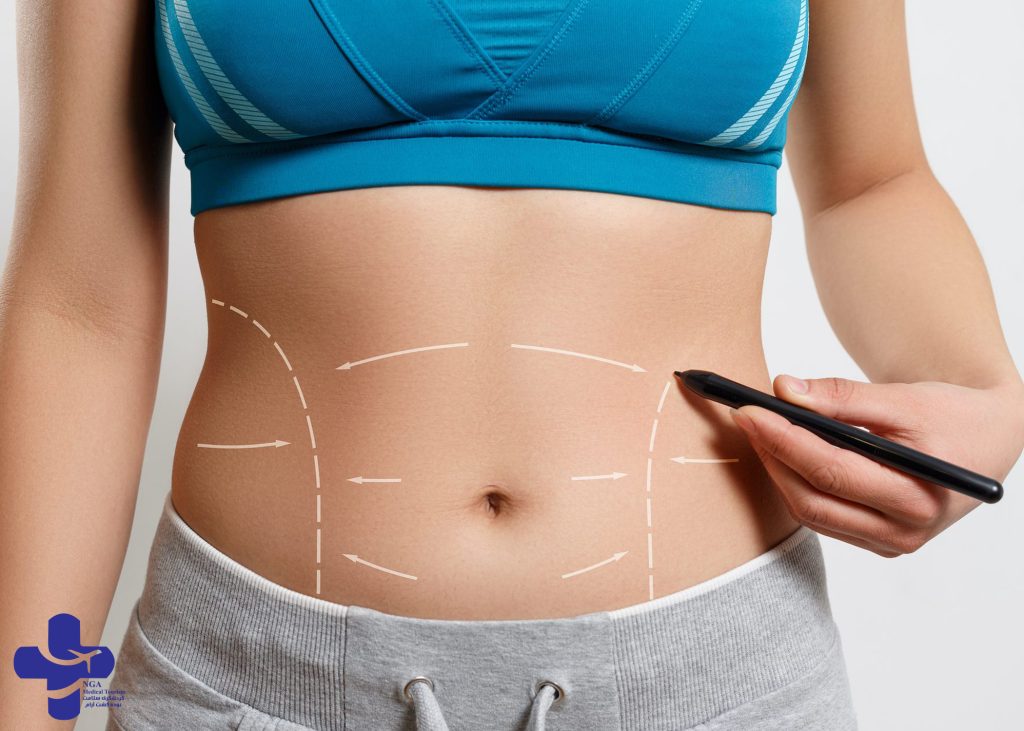
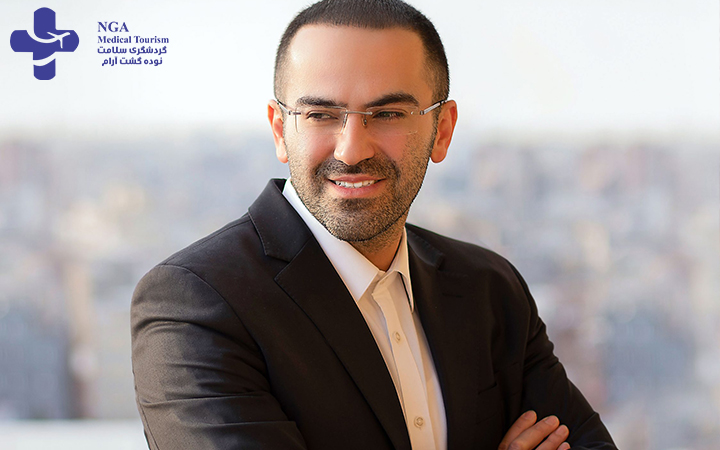
Dr.Amir daryani

Dr.Mohsen fadaei
Vaser liposuction in Iran
Vaser liposuction is a type of liposuction that uses ultrasound energy to break up and liquefy fat cells before they are suctioned out of the body. This technique is typically less invasive and results in less bleeding, bruising, and swelling compared to traditional liposuction.
Vaser liposuction is available in Iran and is performed by qualified and experienced plastic surgeons. The procedure is typically performed under local anesthesia, although general anesthesia may be used for larger areas or for patients who prefer to be asleep during the procedure.
During the procedure, the surgeon will make small incisions in the skin and insert a small probe that emits ultrasound energy. The ultrasound energy breaks up and liquefies the fat cells, which are then suctioned out of the body using a small cannula.
The recovery time for Vaser liposuction is typically shorter compared to traditional liposuction, and most patients are able to return to work and normal activities within a few days to a week after the procedure.
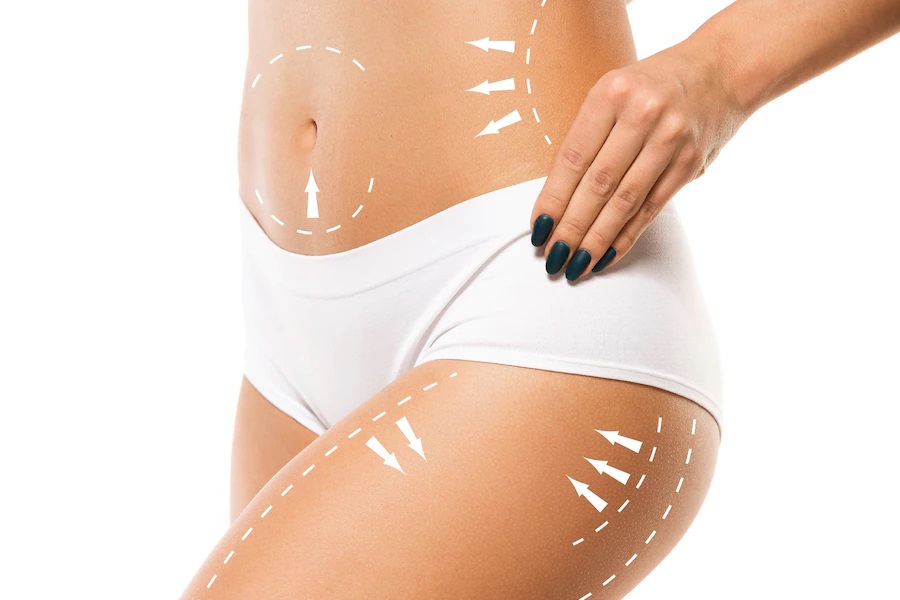
Thigh Liposuction in Iran
Thigh liposuction is a cosmetic procedure that removes excess fat from the thighs, resulting in a slimmer and more contoured appearance. Thigh liposuction is available in Iran and is performed by qualified and experienced plastic surgeons.
The procedure typically involves making small incisions in the thighs and using a cannula to suction out the excess fat. The surgeon will carefully sculpt the thighs to create a smooth and natural-looking contour.
Thigh liposuction is typically performed under local anesthesia, although general anesthesia may be used for larger areas or for patients who prefer to be asleep during the procedure. The procedure usually takes a few hours to complete, depending on the extent of the treatment area.
After the procedure, patients may experience some swelling and bruising in the treated area, and will need to wear compression garments to help reduce swelling and promote healing. Most patients are able to return to work and normal activities within a few days to a week after the procedure, although strenuous exercise should be avoided for several weeks.

Liposuction Hospitals in Iran
Who is a good candidate for liposuction?
Liposuction is a cosmetic procedure that can help remove excess fat from specific areas of the body. A good candidate for liposuction is someone who:
- Has good overall health
- Has stubborn areas of fat
- Has good skin elasticity
- Has realistic expectations
- Is committed to maintaining a healthy lifestyle
Who should avoid undergoing a Liposuction?
People who should avoid undergoing a liposuction include those who:
- Have significant health problems
- Are pregnant or breastfeeding
- Have a weakened immune system
- Have unrealistic expectations
- Have a history of poor wound healing
- Are significantly overweight
- Are taking blood thinners
What are the side effects of liposuction?
Liposuction is a surgical procedure that is generally safe, but like any surgical procedure, it carries some risks and potential side effects. Some of the common side effects of liposuction include:
1. Swelling: Swelling is a normal and expected side effect of liposuction. It can be reduced by wearing compression garments as directed by the surgeon.
2. Bruising: Bruising is another common side effect of liposuction. It can last for several weeks and can be reduced by applying ice packs and wearing compression garments.
3. Pain: Some pain and discomfort are expected after liposuction. Pain medication is usually prescribed to manage the discomfort.
4. Numbness: Numbness or tingling in the treated area is common after liposuction. It usually goes away on its own in a few weeks.
5. Irregularities: Liposuction can sometimes result in uneven contours or skin irregularities. This is more common when large volumes of fat are removed.
6. Scarring: Scarring after liposuction is usually minimal and fades over time. However, some patients may develop more noticeable scars.
7. Infection: Although rare, infection is a potential complication of any surgical procedure, including liposuction.
8. Allergic reactions: Some patients may have an allergic reaction to the anesthesia or other medications used during the procedure.
9. Fluid accumulation: Fluid can accumulate in the treated area after liposuction, which may require drainage.
It is important to follow the post-operative instructions carefully to minimize the risk of complications and to discuss any concerns or questions with the plastic surgeon. In general, the side effects of liposuction are temporary and resolve on their own within a few weeks.

Pre-Operative Considerations for Liposuction in Iran:
If you are considering liposuction in Iran, there are several pre-operative considerations that you should keep in mind. These can include:
- Medical evaluation: Before undergoing liposuction, you will need to undergo a medical evaluation to ensure that you are healthy enough for the procedure.
- Medication review: You should inform your surgeon of any medications you are taking, including prescription medications, over-the-counter medications, and supplements.
- Smoking cessation
- Weight stabilization
- Compression garments: You may be required to wear compression garments before and after the procedure to help reduce swelling and promote healing.
- Recovery plan: You should have a plan in place for your recovery after the procedure. This may include taking time off work and the other.
- Follow-up appointments: You should schedule follow-up appointments with your surgeon to monitor your progress and ensure that you are healing properly.
What is the success rate of liposuction?
Liposuction is generally considered a safe and effective procedure with a high success rate. However, the success rate can vary depending on several factors, including the extent of the procedure, the patient’s overall health and lifestyle, and the experience and skill of the surgeon.
When performed by a qualified and experienced plastic surgeon, liposuction can result in significant improvements in the appearance of the treated area, with a reduction in excess fat and a smoother, more contoured appearance.
It’s important to have realistic expectations about the outcome of liposuction, as it is not a guarantee of perfection. The success of the procedure depends on several factors, including the patient’s skin elasticity, the amount of fat removed, and the patient’s commitment to maintaining a healthy lifestyle with a balanced diet and regular exercise.
What is the post-operative diet for a Liposuction?
After liposuction, it’s important to follow a healthy and balanced diet to aid in the healing process and maintain the results of the procedure. Here are some general dietary guidelines to follow after liposuction:
- Stay hydrated: Drinking plenty of water is important after liposuction to help flush out toxins and reduce swelling.
- Eat a balanced diet
- Avoid processed foods: Processed foods, sugary drinks, and high-fat foods should be avoided after liposuction, as they can contribute to inflammation and slow down the healing process.
- Limit sodium intake: High-sodium foods can cause water retention and lead to swelling after liposuction.
- Take supplements: Your surgeon may recommend taking supplements such as vitamin C, vitamin E, and zinc to help support the healing process.
- Avoid alcohol: Alcohol can interfere with the healing process and increase the risk of complications after liposuction. It’s best to avoid alcohol for at least two weeks after the procedure.
- Gradually resume normal eating habits: You may need to start with a soft or liquid diet for the first few days after liposuction
Frequently asked questions about liposuction
Liposuction is a surgical procedure that removes fat cells from specific areas of the body, typically using a cannula (a thin tube) and suction. The results of liposuction can be long-lasting, but it is important to note that the procedure does not prevent new fat cells from forming in the treated areas or in other areas of the body.
Liposuction is a cosmetic procedure that is primarily designed to remove localized areas of stubborn fat that are resistant to diet and exercise. It is not intended as a weight loss method, and the amount of fat that can be safely removed during the procedure is generally limited.
The recovery time for liposuction can vary depending on the extent of the procedure and the individual’s overall health and healing process. In general, most people can expect to need several days to a few weeks to recover fully from the procedure.
In general, most plastic surgeons will limit the amount of fat that is removed during a single liposuction procedure to no more than 5 liters (or approximately 11 pounds) of fat. Removing more than this amount of fat in a single procedure can increase the risk of complications such as fluid shifts, electrolyte imbalances, and blood clots.
Liposuction can benefit individuals who are close to their ideal body weight and have specific areas of stubborn fat that are resistant to diet and exercise. These areas may include the abdomen, hips, thighs, buttocks, upper arms, back, and neck.
The amount of fat that should be removed during a liposuction procedure for optimal results depends on several factors and requires careful evaluation by the surgeon. During the initial consultation, the surgeon will evaluate the patient’s overall health, skin tone, body shape, and the specific areas of stubborn fat to be treated.
Yes, it is possible to inject the fat that is removed during liposuction into other areas of the body in a procedure known as fat transfer or fat grafting. Fat transfer involves taking the harvested fat and processing it to remove any excess fluids and impurities before injecting it into the desired area.
Liposuction is not a weight loss procedure, and the amount of weight that is lost as a result of the procedure is typically relatively modest. While liposuction can remove a significant amount of fat from specific areas of the body, it is important to remember that fat only accounts for a portion of a person’s overall body weight.
No, chest liposuction is not only done for women. Chest liposuction, also known as chest contouring or chest sculpting, is a procedure that is performed to remove excess fat from the chest area and create a more defined, masculine chest contour. This procedure is commonly performed on men who have excess chest fat or who have a condition called gynecomastia, which is the development of breast tissue in men.
Liposuction and tummy tuck (abdominoplasty) are both cosmetic procedures that are commonly performed to address excess fat and skin in the abdominal area. While these procedures can be performed separately, they can also be combined to achieve more comprehensive results.
between $1,500 to $2,500
The average cost of lipo in Iran is between $1,500 to $2,500, while this number is much higher in U.S. and Europe.
Liposuction is a minimally invasive procedure that typically results in very small incisions, which means that scarring is usually minimal. In most cases, the incisions used for liposuction are less than a quarter of an inch in length and are placed in inconspicuous areas of the body, such as natural skin folds or creases.
After liposuction, it is generally recommended that patients avoid air travel for at least one to two weeks. This is because air travel can increase the risk of blood clots, particularly in the legs, which can be a serious complication after liposuction.
Liposuction can help to improve body contour and reduce excess fat, but its effect on skin tightness can vary depending on several factors, including the individual’s age, skin elasticity, and the extent of the procedure.
Liposuction can help to improve body contour and reduce excess fat, but its effect on skin tightness can vary depending on several factors, including the individual’s age, skin elasticity, and the extent of the procedure.
On average, the cost of stomach liposuction in the United States ranges from $2,000 to $7,000, with the average cost being around $3,500 to $4,500. However, it is important to note that these prices are estimates and can vary widely depending on the individual circumstances of each patient.
Liposuction costs between $4,000 and $8,000 with an average cost of $6,000, whereas a tummy tuck ranges between $6,000 and $10,000 with an average cost of $8,000.
How much is the most expensive liposuction? The Ultimate VASER high definition liposuction procedure which has been acclaimed as the most expensive liposuction in the world can be claimed for approximately $45,000.
The short answer is yes, liposuction can generally get rid of belly fat! Now, having said that, there are some caveats and of course a consultation is needed to determine your candidacy for this body contouring procedure. But overall, liposuction is well-suited to removing isolated, excess fat on the belly area.
Liposuction isn’t particularly painful, as you’ll most likely be under general anesthesia for the procedure. However, you may feel a considerable amount of discomfort after you wake up from your surgery.
Once fat cells have been removed through liposuction, those cells cannot grow back, and we cannot develop new fat cells. As adults, we have a fixed number of fat cells. However, our remaining fat cells can enlarge and shrink with weight gain or loss.
2 sizes
With liposuction you can lose about 2 sizes. 6 to 7 litres of fat can be removed at most, depending on which areas you are having treated. Liposuction is especially suitable if you want to reduce local accumulation of fat that dieting and plenty of exercise have been unable to shift.
When fat deposits are removed through liposuction, those fat cells are gone forever. After liposuction, the body’s contour is improved, and ideally, the areas in question are now more in proportion to the rest of the body. That said, there will always be some fat cells left
Ultrasound-Assisted Liposuction (UAL)
A significant advantage of UAL is it can more easily take out stubborn, tough fat that often requires more than one session. Also, more fat can be taken out because it is liquid before removal. There also is less bleeding and bruising
Some of the potential risks associated with liposuction include post-surgical infection, a prolonged healing process, clotting of the fat or blood, shock, the accumulation of fluids, burns, perforations, lidocaine toxicity, and unfavorable reactions to drugs or anesthesia.
These risks include bleeding and a reaction to anesthesia. Other risks specific to liposuction include: Contour irregularities. Your skin may appear bumpy, wavy or withered due to uneven fat removal, poor skin elasticity and scarring.
“Three months after Liposuction is generally when patients begin to notice that the treated areas of their body appear tighter and smoother,” explains Dr. Philbin. “Your plastic surgeon will advise you on what level of exercise and strenuous movements are now ok at this time.
Liposuction takes one to two hours
The total length of the procedure itself also depends on what area is being treated. Liposuction in a smaller area of the body such as the chin or neck could take as little as 30 minutes, while liposuction in larger areas such as the buttocks or abdomen could take around 60 minutes.
How to Sleep After a Tummy Tuck and Lipo
Although sleeping on your back may be the best sleep position after surgery, lying flat on your back can pull at your stitches. It’s best to sleep at an incline with your head and knees elevated.
You’ll need to refrain from intense physical activity for several weeks after getting liposuction to optimize the healing process. The majority of swelling after liposuction takes 2 to 3 months to gradually diminish, revealing close to your final results around the 3-month mark.
Some experience weight loss after lipo, while others look visibly thinner but maintain the same weight. It is important to consult with your doctor about the best way to achieve safe and healthy weight loss following a liposuction procedure based on your individual body type, health history, and lifestyle habits.
Patients often experience a rapid weight gain following the procedure as the body aims to recoup fat and the affected areas will fill with fluid that the body uses to heal.
Generally speaking, doctors recommend removing no more than 5 litres of fat during any one procedure—that’s approximately 4-5 kilograms. In some cases, you will require more than one procedure if multiple areas are being treated.
You will be able to return to your normal activities as soon as you feel comfortable. This may take several days to a few weeks. Most people can return to light work within a few days. It may take longer to get back to normal if a lot of fat was removed.
Only small amounts of weight can be removed during liposuction due to risks from the procedure. Only fat under the skin can be removed by liposuction, not the internal fat that surrounds our organs and is more important in obesity-related medical problems.
One reason belly fat is so hard to lose is that it’s considered an “active fat.” Unlike some fatty tissue that simply sits “dormant,” belly fat releases hormones that can have an impact on your health — and your ability to lose weight, especially in the waist and abdomen areas.
People who are pregnant or with severe heart problems or blood-clotting disorders should not get liposuction, as they may be at risk for dangerous, life-threatening complications like excessive blood loss.
Hip, flank and back liposuction may come with an increased level of discomfort for some people due to the nature of the treatment area and the healing process.
First and foremost, liposuction does not affect a woman’s ability to become pregnant. Liposuction targets small deposits of fat on the body and poses no risk to a woman’s reproductive organs or other organs for that matter.
Don’t go swimming and do not soak in a bathtub ,You should also avoid sitting in a hot tub or sauna during this time so as not to increase blood flow which could lead to infection or bruising around incisions made during liposuction.
